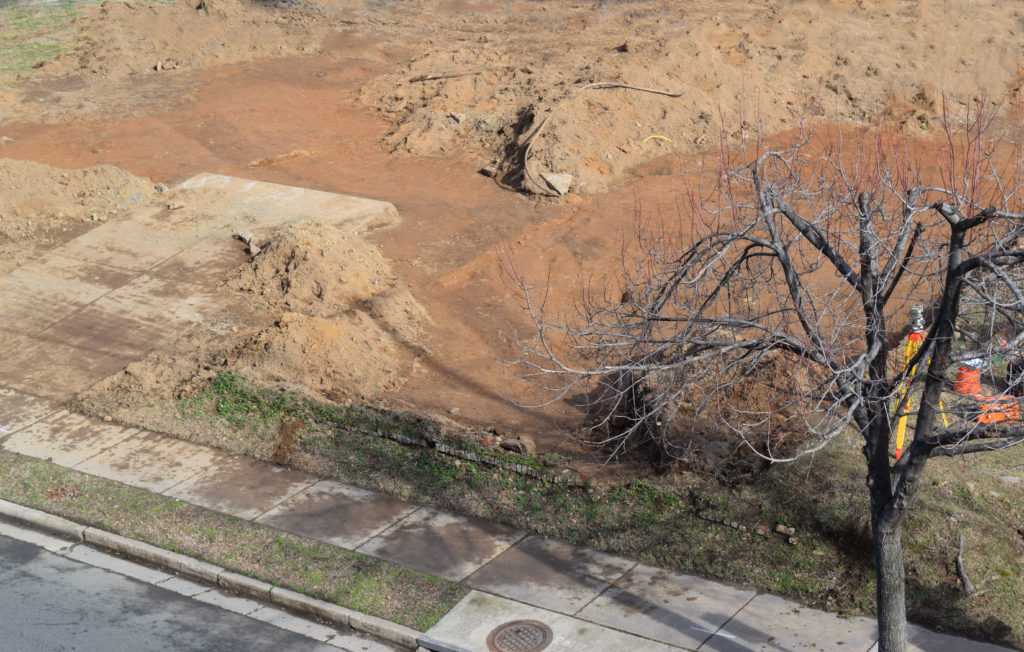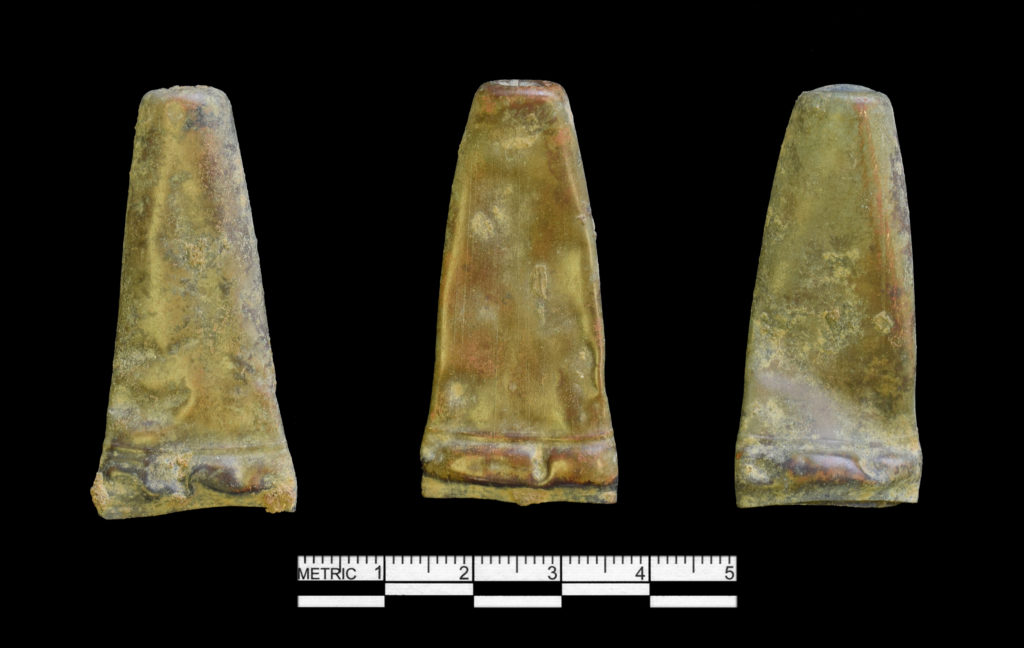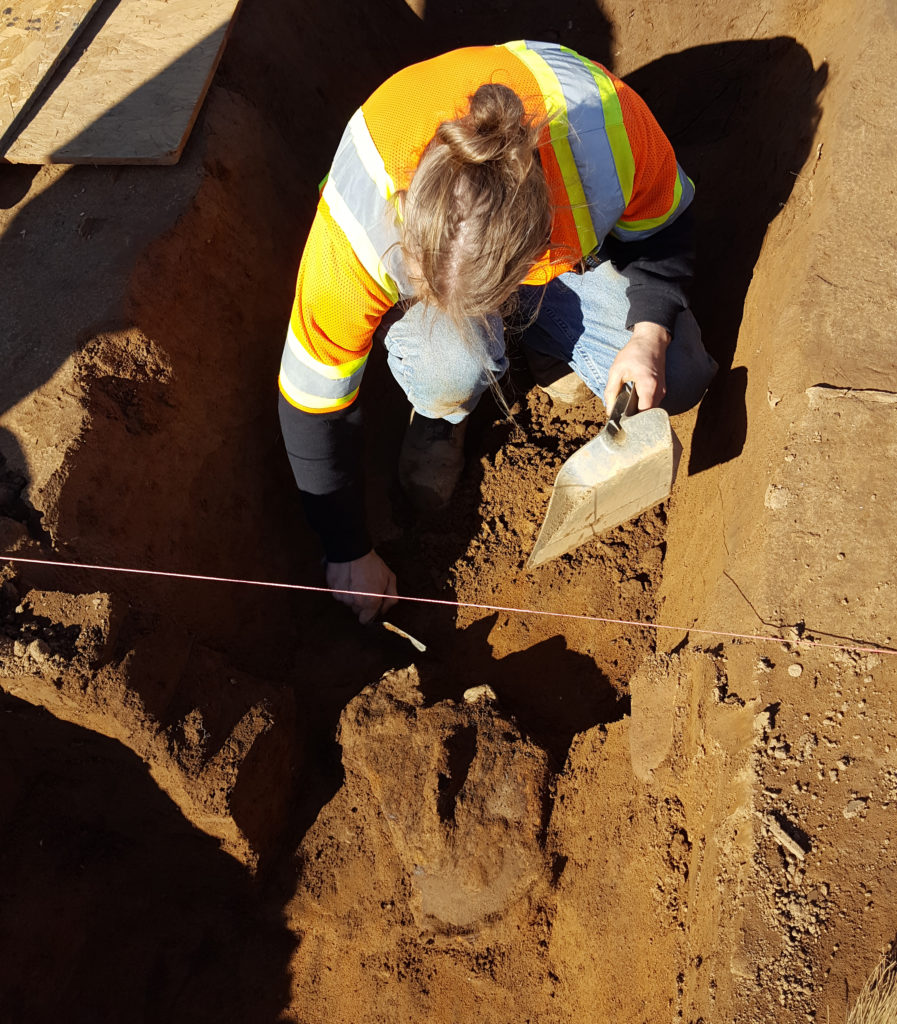Featured Fragment – Archaeology in Downtown Fredericksburg
By Joe Blondino and Dr. Kerri Barile
In January 2017, the City of Fredericksburg sponsored an archaeological dig at the site of the new Riverfront Park on Sophia Street in the downtown historic district. The site (44SP0069-1) was first explored in August 2013 during preliminary studies as part of the City’s park planning initiative. The archaeological survey, conducted by Dovetail, uncovered the foundations of 14 buildings, including several 18th and 19th century homes, a pre-Civil War ice house, privies, and a possible slave quarter. A portion of the site was accidentally disturbed during area construction in the fall 2015, exposing archaeological features and human remains. The City and Dovetail conducted additional work on the site in October 2015 to conduct salvage excavations on the disturbed features. The remains of a probable antebellum slave quarter and the backyard of the circa 1750 Rowe-Goolrick House (the foundation of which is now under a nearby parking lot) were uncovered, as well as Civil War trenches and a stone boundary wall. The Rowe-Goolrick House, like many dwellings in town, was used as a hospital during the 1862 Battle of Fredericksburg, and the human remains found during the dig may have belonged to Union soldiers who died while under treatment at the hospital. DNA analysis and other scientific techniques are currently being employed to possibly identify the lineage of the remains.
As plans for the new Riverfront Park are developed, additional archaeological work is being conducted on the site as part of the City’s commitment to historic preservation and archaeological study. Dovetail returned to the site in January 2017 to complete the excavations of the disturbance area begun in 2015. The goal was to further explore the building foundations, back yard area, and Civil War trenches that were found during the earlier work. The team also wants to assure that all human remains possibly buried in the area are removed and properly treated. As of the authoring of this blog, Dovetail has identified a section of a Civil War-era entrenchment as well as archaeological features related to the 18th century occupation of the area, such as post holes and refuse pits.
Artifacts recovered during the excavations also highlight the 18th and 19th century activities of the lot. Fragments of ceramics, nails, bottle glass, and personal items such as smoking pipe fragments and shoe buckles have been recovered. Particular artifacts of note include three Burnside carbine cartridges and a lid to a cast iron Dutch oven (pictured below). The Burnside cartridges almost certainly relate to Civil War activity on the site. The .54 caliber Burnside carbine was designed in the mid-1850s by Ambrose Burnside, who would later lead the Federal Army during the Battle of Fredericksburg. The breech-loading Burnside carbine, being relatively small and quick to load, was used primarily by Union Cavalry. However, with tens of thousands of them issued to Federal troops, they were not an uncommon weapon and captured Burnsides could have been used by Confederates as well. Although it is not definitively a military object, the Dutch oven lid is consistent with cookware that would have been used by groups of soldiers preparing and consuming communal meals.
Information gleaned from the work will be presented in a report, at public talks, and in interpretive panels to be mounted at the site as part of the park design. The success of the archaeological project relies on the teamwork of many groups—the City of Fredericksburg, Rhodeside & Harwell (park designers), Downey & Scott (construction managers), Dovetail, and others. Partnership, coordination, and communication have assured that this notable site is explored and the history of this area is shared with future generations.
Any distributions of blog content, including text or images, should reference this blog in full citation. Data contained herein is the property of Dovetail Cultural Resource Group and its affiliates.




